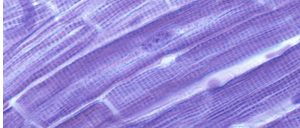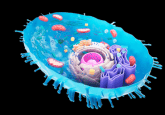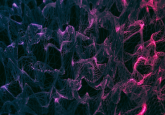A novel assay for abnormal α-synuclein detection

A new study has developed an assay that can identify incorrectly folded α-synuclein, a biomarker of synucleinopathies, in patient serum.
Synucleinopathies are neurodegenerative diseases, such as Parkinson’s disease (PD), that are characterized by the accumulation of incorrectly folded α-synuclein, a protein abundant in the brain. Previously, definitive detection of α-synuclein in patient serum samples has been unreliable. Now, researchers from Juntendo University (Tokyo, Japan) and Nagasaki University (Japan) have developed a novel assay that can not only reliably detect α-synuclein aggregates, but also differentiate between neurodegenerative diseases based on the type of α-synuclein aggregates present.
Incorrectly folded α-synuclein forms aggregates known as ‘seeds’. These seeds attract other α-synuclein proteins, which results in larger clumps. The current research team wanted to develop a method for the detection of these seeds, within patient sera, as indicators of synucleinopathies. To do this, they developed an assay called immunoprecipitation-based real-time quaking-induced conversion (IP/RT-QuIC).
 Cryo-EM reveals an amyloid protein structure associated with a rare disease
Cryo-EM reveals an amyloid protein structure associated with a rare disease
Solving the structure of an amyloid protein gives new insight into limb-girdle muscular dystrophy type 3 (LGMD D3) and functional protein aggregation.
IP/RT-QuIC works by isolating α-synuclein seeds from a patient’s serum sample via immunoprecipitation, a process where an antibody binds to a target protein and separates it from other proteins in the serum. The seeds then undergo rapid amplification, induced by shaking. IP/RT-QuIC is a highly sensitive method that can detect extremely small concentrations of α-synuclein seeds from a patient’s serum.
Senior author Nobutaka Hattori (Juntendo University) explained, “in this study, we validated the usefulness of our novel assay system, IP/RT-QuIC, as a diagnostic marker of synucleinopathies. We propose that the fibril morphology of serum α-synuclein seeds and aggregates derived by IP/RT-QuIC can discriminate between Parkinson’s disease (PD), dementia with Lewy bodies (DLB), and multiple system atrophy (MSA).”
The team validated their novel assay by applying it to individuals with neurodegenerative disease and those without, demonstrating the assay’s ability to distinguish healthy α-synuclein from α-synuclein seeds. They then used transmission electron microscopy to determine the structural properties of the seeds; depending on the synucleinopathy, the structure of the seed differed. For example, PD and DLB seeds had a paired-filament formation, whereas MSA seeds consisted of one twisted and one straight structure.
By combining IP/RT-QuIC with transmission electron microscopy, the team was able to reliably detect α-synuclein seeds and identify their associated synucleinopathy. With further research and development, this novel assay could be a reliable and fast diagnostic for individuals with suspected synucleinopathies.
“Our new IP/RT-QuIC assay may have many future applications as a biomarker for precise diagnosis and monitoring of treatment of neurodegenerative diseases in clinical trials. This simple diagnostic method will enable the establishment of personalized therapy options for synucleinopathies,” concluded the team.





